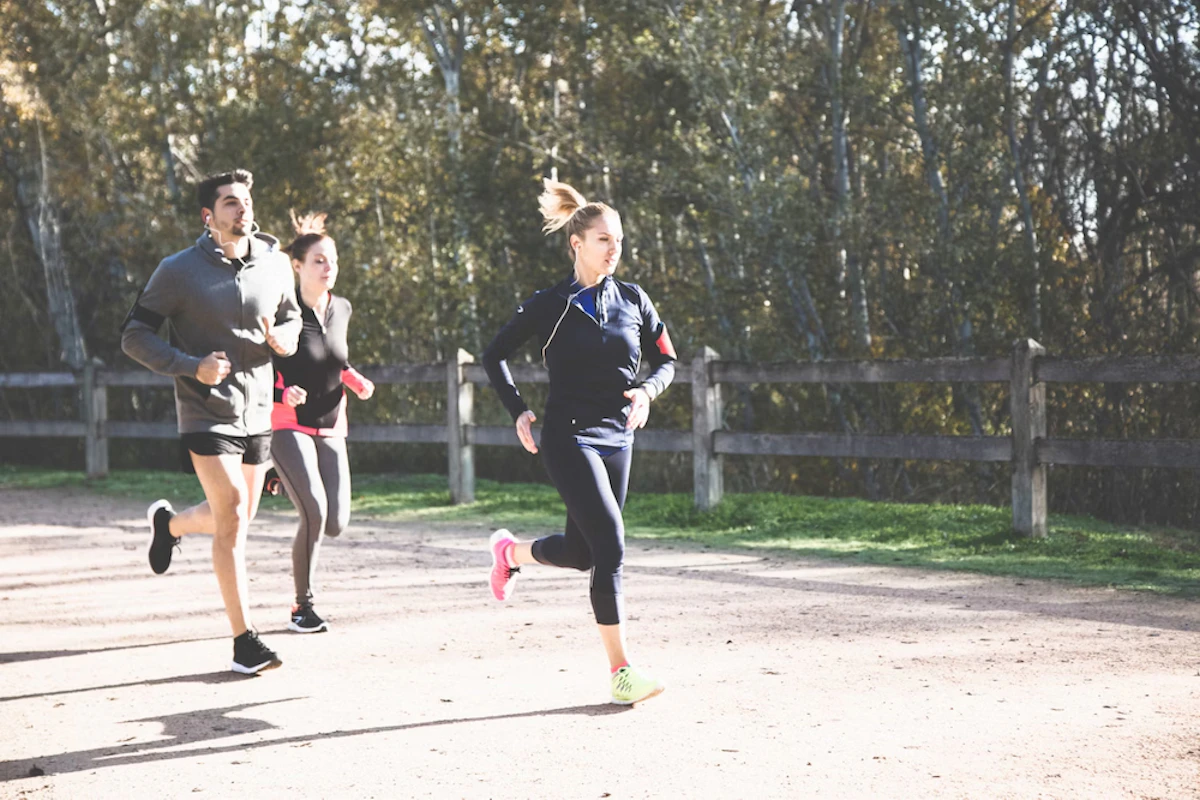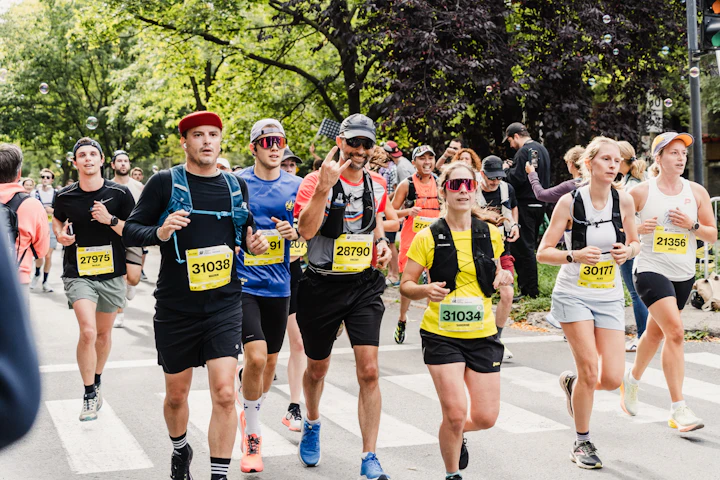Half-Marathon Preparation of Professional Athletes: What are the differences with the peloton?

12 min read
Summary
What is the pros' preparation for a half-marathon?
📅 Can one prepare for a half-marathon in 8 or 10 weeks?
🔥 The key
🍌 Do pros have a nutrition and hydration plan during half-marathon races?
🔎 What are the differences with a beginner's program to prepare for their first half-marathon?
How many kilometers per week for a half-marathon preparation with pros?
🕖🕞 Twice-daily training, the norm among pros to increase training load and perform on 21 km
🐢 Really easy runs during the half-marathon preparation
😴 Strength & conditioning, nutrition, sleep: focus on physical preparation and recovery
🏔️ The benefits of altitude training camps for successfully completing a half-marathon

Receive advice from our passionate coaches!
Running 21.1 kilometers (13,1 miles) in less than one hour. It seems crazy to the average person and to the vast majority of runners like us. It is, however, a reality for the top male specialists in the half-marathon. The best women complete the half-marathon distance in under 1 hour and 10 minutes, and even 1 hour and 3 minutes for the world record holder. Stunning times compared to the average time of all runners, which is around 2 hours. How can we explain such differences? Of course, genetic makeup plays an important role in performance. Next, it's all about training and overall investment around daily practice. Reaching the highest level requires a lot of dedication and discipline. Let's take a closer look at the half-marathon preparation of the pros.
What is the pros' preparation for a half-marathon?
To describe the half-marathon preparation of a professional athlete, we have chosen to take a concrete case: Etienne Daguinos' training up to the Valencia Half-Marathon. On October 27, 2024, the 24-year-old Frenchman recorded an impressive time of 59 minutes and 46 seconds, matching the third best French all-time performance. How did he prepare for his half-marathon in Valencia?
📅 Can one prepare for a half-marathon in 8 or 10 weeks?
For the amateur athlete, a half-marathon preparation of eight or ten weeks is short. It is wiser to plan for a minimum of twelve weeks, or even a little more if you are starting out, to give yourself enough time to properly prepare for this distance.
Indeed, you need to ensure you patiently increase your weekly running volume. Progress is important to limit the risk of injury. Additionally, you should allow between ten and fourteen days of tapering to arrive rested on race day.
For a pro, the duration of the specific preparation can be reduced. Elites are used to training a lot over the years. Their bodies have a memory and better withstand the stress of a heavy training load. Their recovery abilities are far superior to yours. They can tolerate a faster increase in volume and intensity. Finally, the duration of their pre-race tapering is shorter.
Let's take the example of Étienne Daguinos. After a three-week summer break, he completed an initial four-week training cycle of base work alternating runs and cycling sessions. On August 14, he ran the Dax 10 kilometers in 28 minutes and 56 seconds without specific preparation. Next, his preparation for the Valencia Half-Marathon stretched over ten weeks. We are indeed talking about specific preparation.

🔥 The key workouts of the pros' half-marathon preparation: intervals and specific paces.
Few pros perform more than three intensity workouts per week. Their plans generally include short interval workouts on the track to work on both speed and the VO2 Max. In addition to trainings with a high percentage of MAS, specific pace workouts are essential. In the case of pros, they are close to their pace at 60' Threshold.
Étienne Daguinos innovated this year by introducing double threshold into his preparation. Following the model popularized by the Norwegian method, he completed two Quality Sessions in the same day, once a week, for five weeks. View details :
long intervals in the morning (up to 5 x 2000 meters)
shorter and faster intervals in the afternoon (15 x 300 meters to 15 x 500 meters).
The athlete abandoned the double threshold in the last four weeks before Valencia to focus on half-marathon pace workouts. He completed two test workouts: a 2 x 7,000 meters at J-14 of the competition then a 10 x 1,000 meters at J-10.
His program also included specific footwork workouts, hill workouts, and straight lines to perfect his running biomechanics. Finally, his long runs never exceeded 1 hour and 25 minutes or 24 kilometers.
🍌 Do pros have a nutrition and hydration plan during half-marathon races?
Athletes running the half-marathon in about 1 hour do not need to eat. By performing a good carbohydrate load before the race, muscle and liver glycogen reserves are sufficient for an effort of less than approximately 1 hour 20 minutes. Some may drink a little water or sports drink during the race, but again it is not mandatory.
The logic is different for runners in the middle of the peloton. When the effort exceeds 1 hour 15 minutes to 1 hour 20 minutes, it is essential to hydrate and eat to reload carbohydrates. It is indeed the main fuel during effort.
🔎 What are the differences with a beginner's program to prepare for their first half-marathon?
For beginners, the main goal is to reach the finish line safely.
We do not put the focus on optimizing half-marathon pace but on endurance. The general development phase is a priority. To be able to run for about two hours, the emphasis is on weekly overall volume and especially on long runs.
You need to get used to running between 1 hour 30 minutes and 1 hour 45 minutes, resisting fatigue. These runs are also an opportunity to practice fueling. It is also pertinent to vary paces during training and perform intervals at speeds slower or faster than your half-marathon pace.
How many kilometers per week for a half-marathon preparation with pros?
If you train with three or four training sessions per week, your average mileage will be around 30 to 50 kilometers per week during your half-marathon preparation. By adding a fifth session to your training plan, you can reach peaks of 70 kilometers. These volumes are sufficient to prepare a half-marathon under good conditions.
For athletes aiming for high performance in half-marathons, weekly volumes are much higher. They can exceed 150 kilometers or more for marathoner profiles. How do pros manage to handle such training loads?
🕖🕞 Twice-daily training, the norm among pros to increase training load and perform on 21 km
There's no secret. The best way to increase your mileage is to multiply the number of workouts per week. It's a safer solution than extending the duration of each workout. This is why twice-daily training is a common practice among pros.
Some practice it six days a week. Étienne Daguinos “handled” little compared to other runners, such as marathoners who test themselves on half-marathons.
During his half-marathon preparation, he used to double up four times a week for about ten workouts per week. Additionally, he added a cycling workout. His weekly volume was between 120 and 140 kilometers.
🐢 Really easy runs during the half-marathon preparation
To run fast, you need to learn to run slowly. The easy runs in base endurance occupy a major place in pros' training plans. Outside of their intensity workouts, pros accumulate a lot of kilometers in total respiratory ease, at less than 70% of their Maximum Heart Rate.
A typical week for Étienne Daguinos includes many outings at very low intensity ranging from 30 to 50 minutes. He has no problem running at 5 minutes per kilometer or 12 kilometers per hour, an extremely slow pace for him. It's more than 2 minutes below his pace for the half-marathon.
For comparison, if you aim for a time of 1 hour 45 minutes in your next half-marathon, that means you should run your runs at a pace of more than 7 minutes per kilometer (or 8.5 kilometers per hour). We'll let you ponder over that!

😴 Strength & conditioning, nutrition, sleep: focus on physical preparation and recovery
Unlike amateurs, pros are not subjected to the daily stress of a professional activity. Their lives revolve around running. Everything is implemented around performance optimization. Recovery between each workout is part of it.
Sleep, nutrition, and care occupy a central place in their daily lives. For example, a pro athlete has plenty of time to take a nap between their two daily workouts. He/she is followed by a medical staff. Most, like Étienne Daguinos, do at least one strength training workout per week.
🏔️ The benefits of altitude training camps for successfully completing a half-marathon
Another notable difference with the average runner: many pros undertake altitude training camps. Some go to Iten in Kenya, at 2,400 meters altitude.
Others, like Étienne Daguinos, are regulars at Font Romeu in the Pyrenees, at 1,850 meters altitude. Everything is available at the CNEA (National Training Center in Altitude). You can find a running track, hilly terrains, and even a training room in hypoxia to simulate higher altitudes and create physiological adaptations.
Étienne Daguinos spent the last four weeks of his preparation at Font Romeu. To benefit from the effects of his altitude training, he descended only three days before his half-marathon record in Valencia. A successful strategy!
What makes the difference between a professional athlete and a regular runner? Beyond genetic predispositions, it is the quality and quantity of their training.
Their daily life is focused on the pursuit of performance. Good recovery is essential to assimilate heavy training loads.
Technical work, physical preparation, pace adherence, tracking and feedback from training coach. Nothing is left to chance. We are far from the daily life of an amateur runner.
However, you can draw some interesting lessons: slow down during your runs, for example, and conserve your energy for intensity workouts. This little advice, overlooked by many runners, is an important key to progression.








